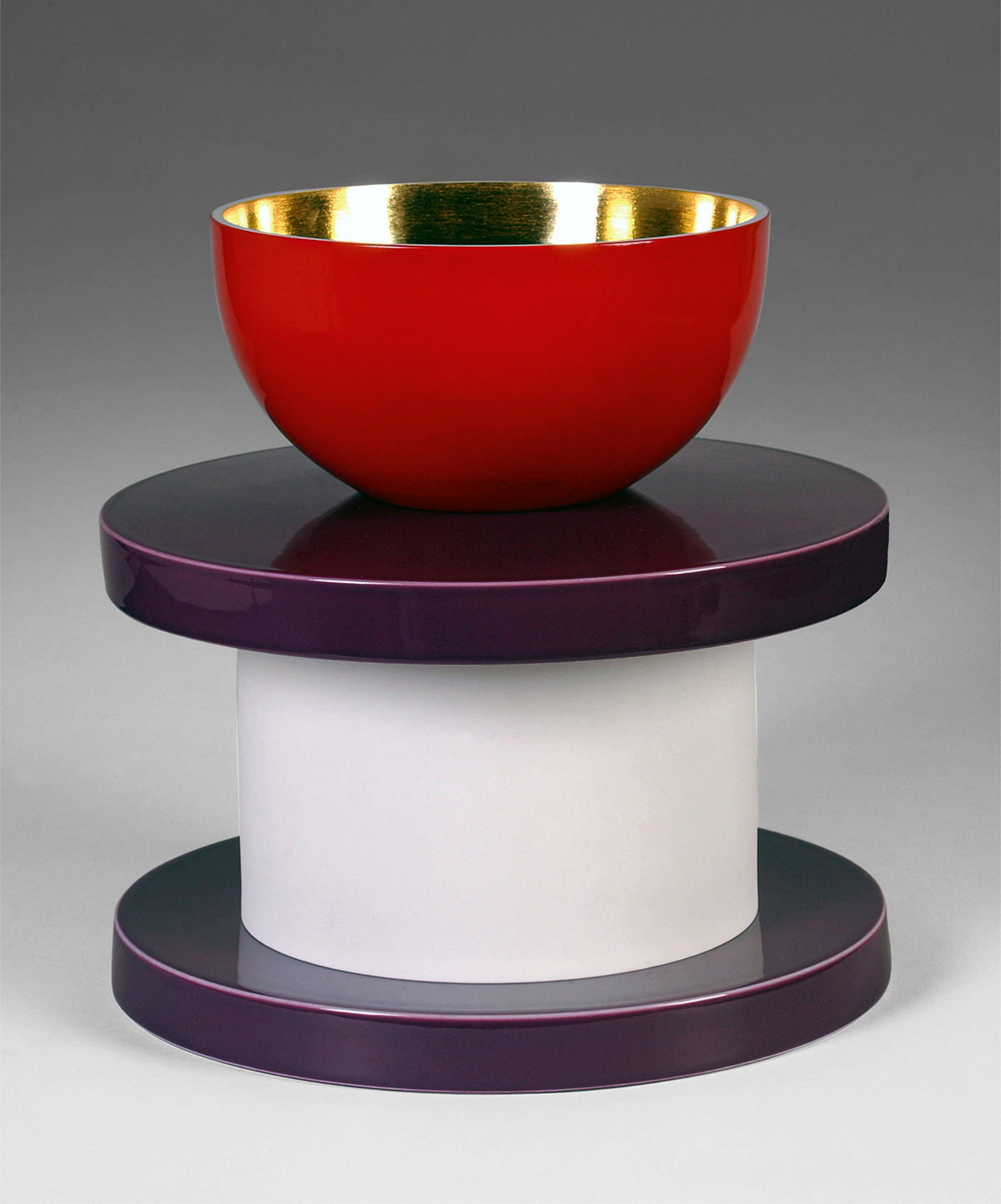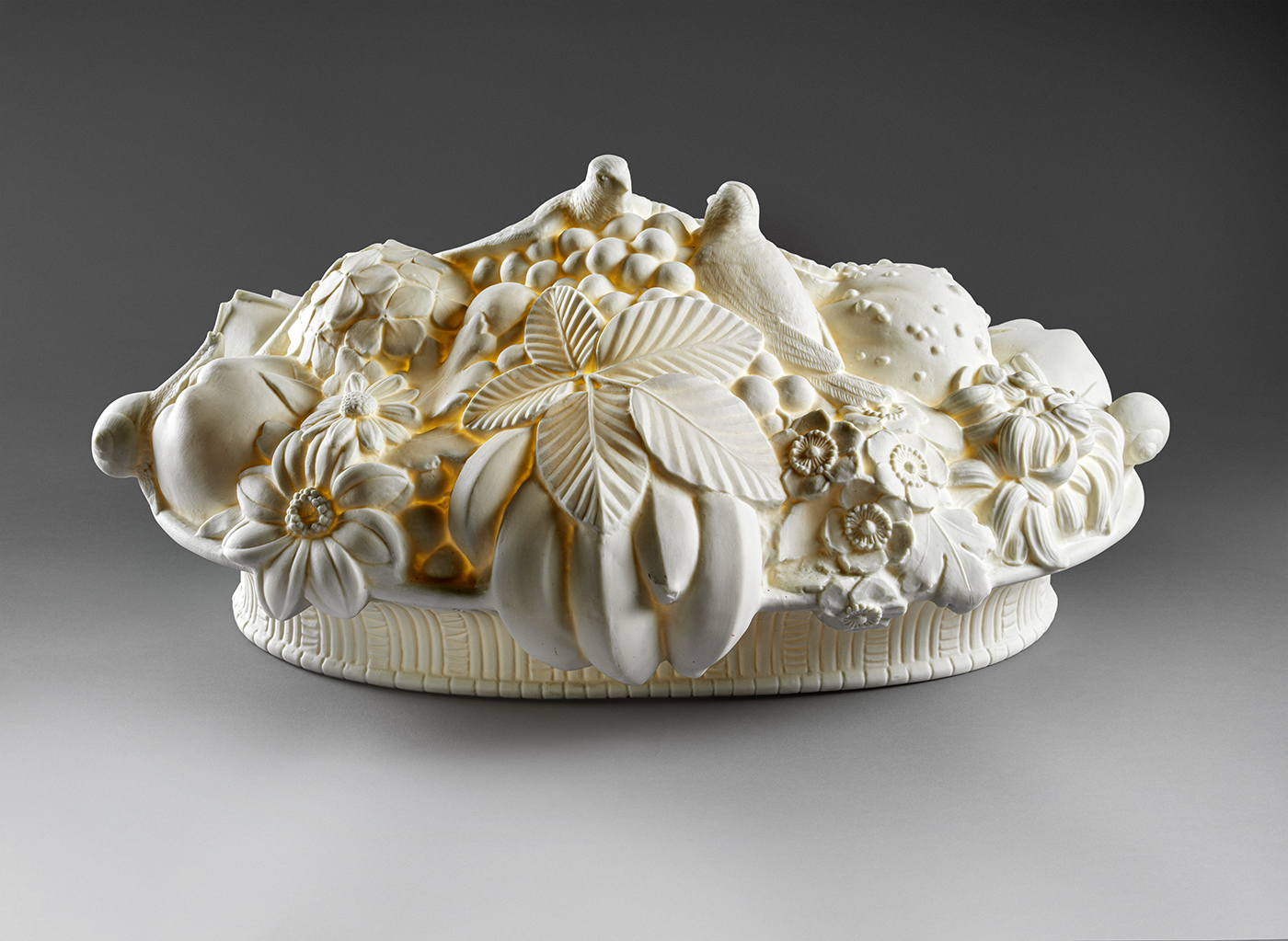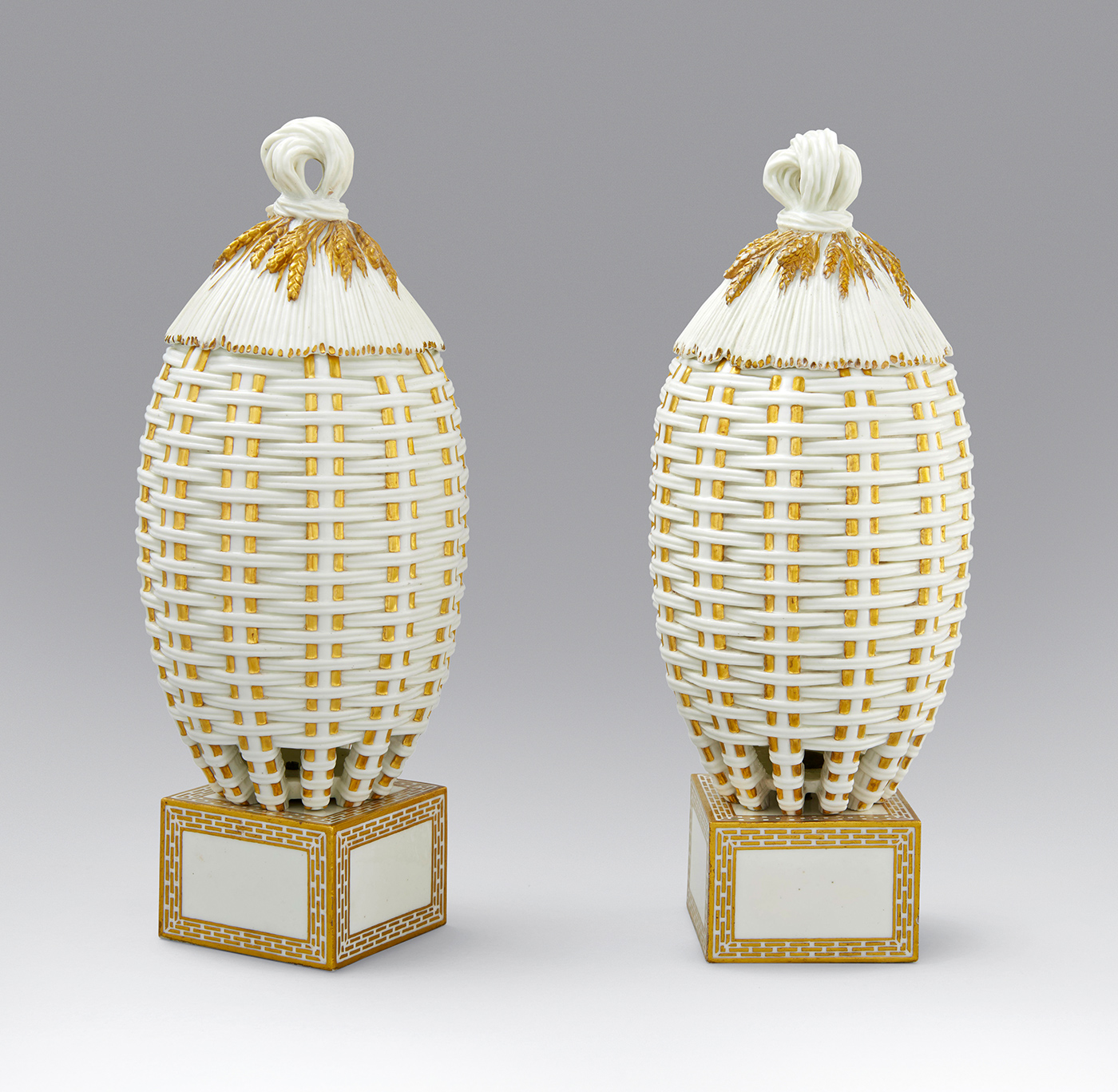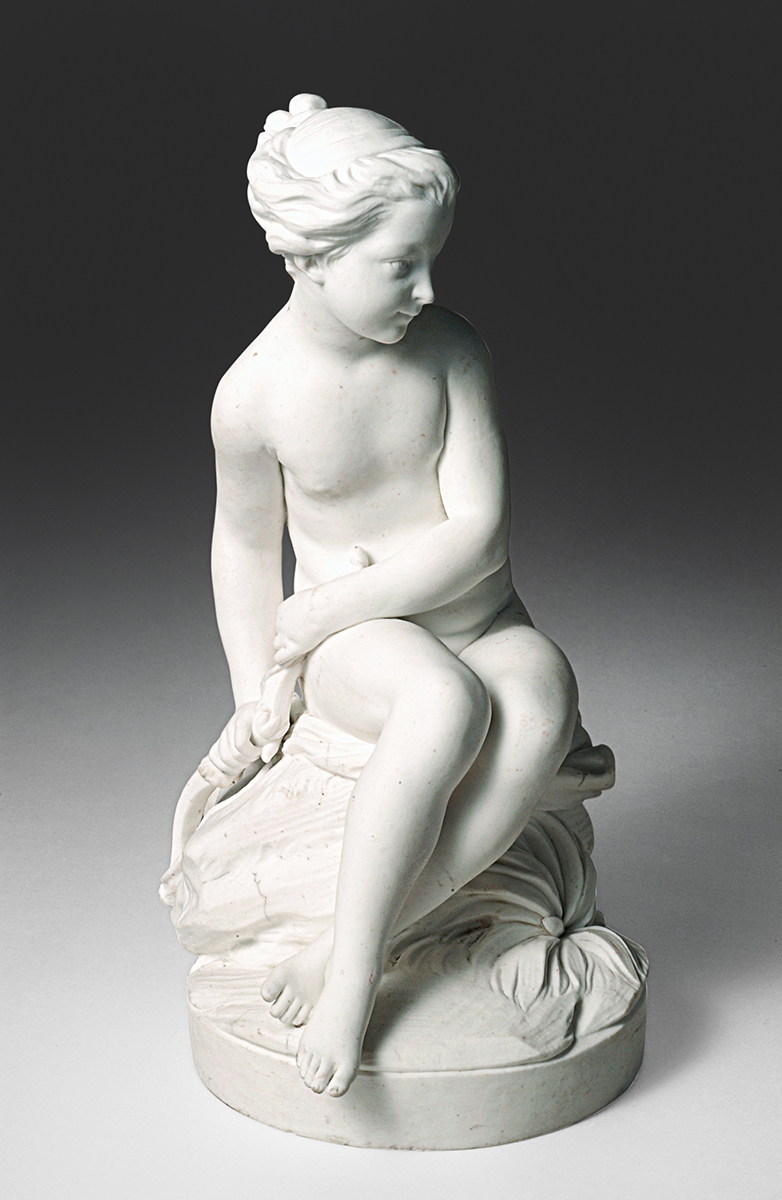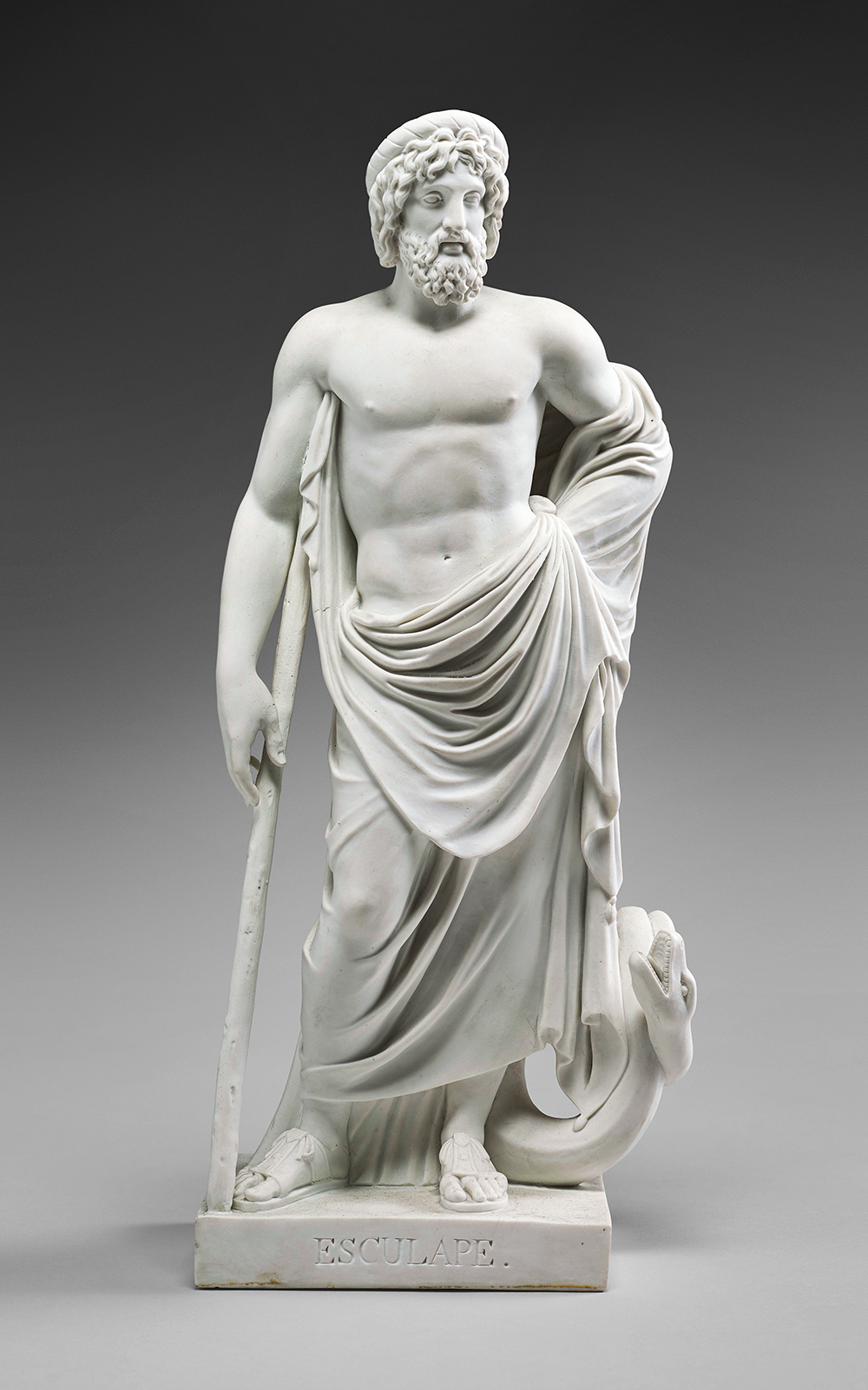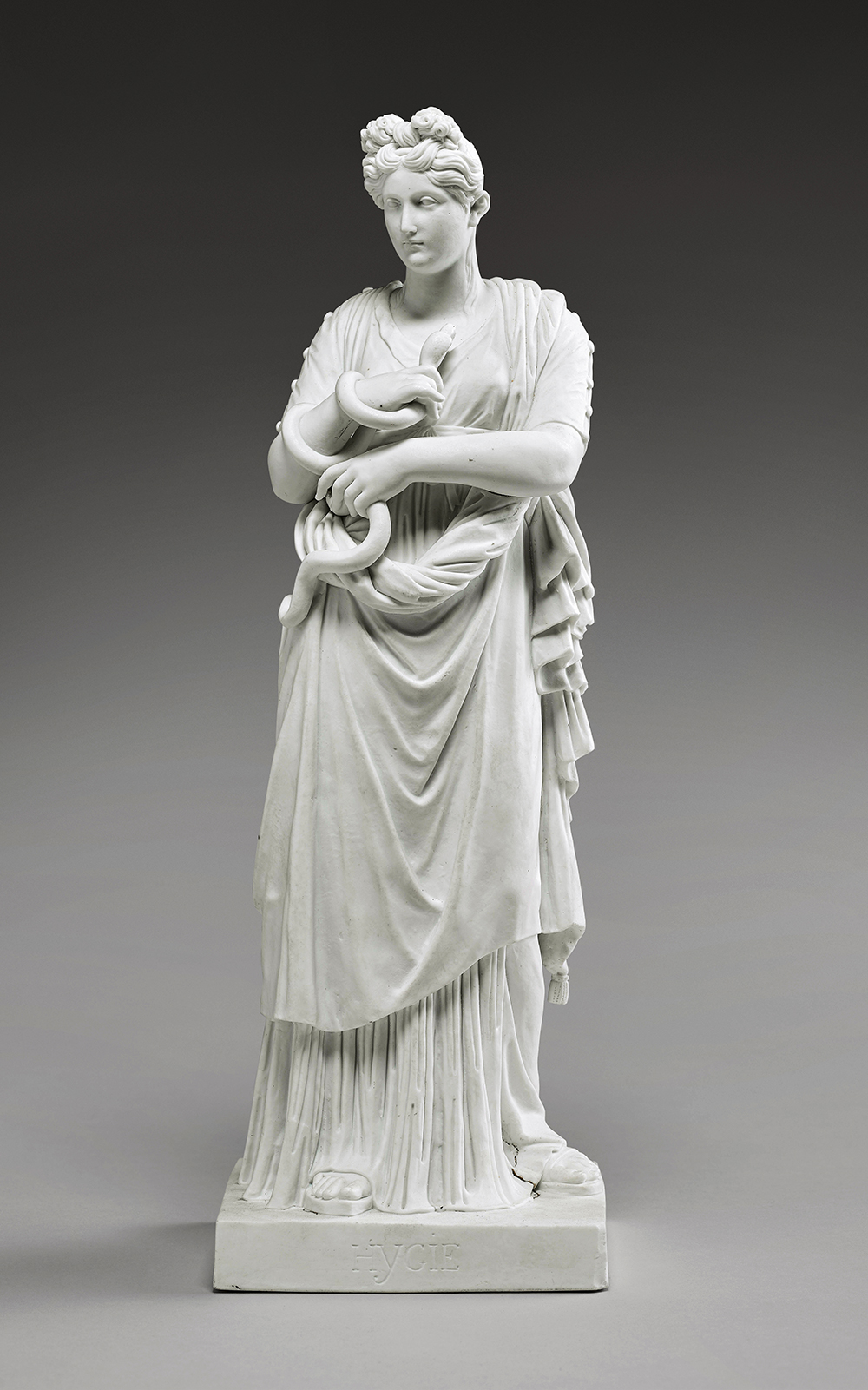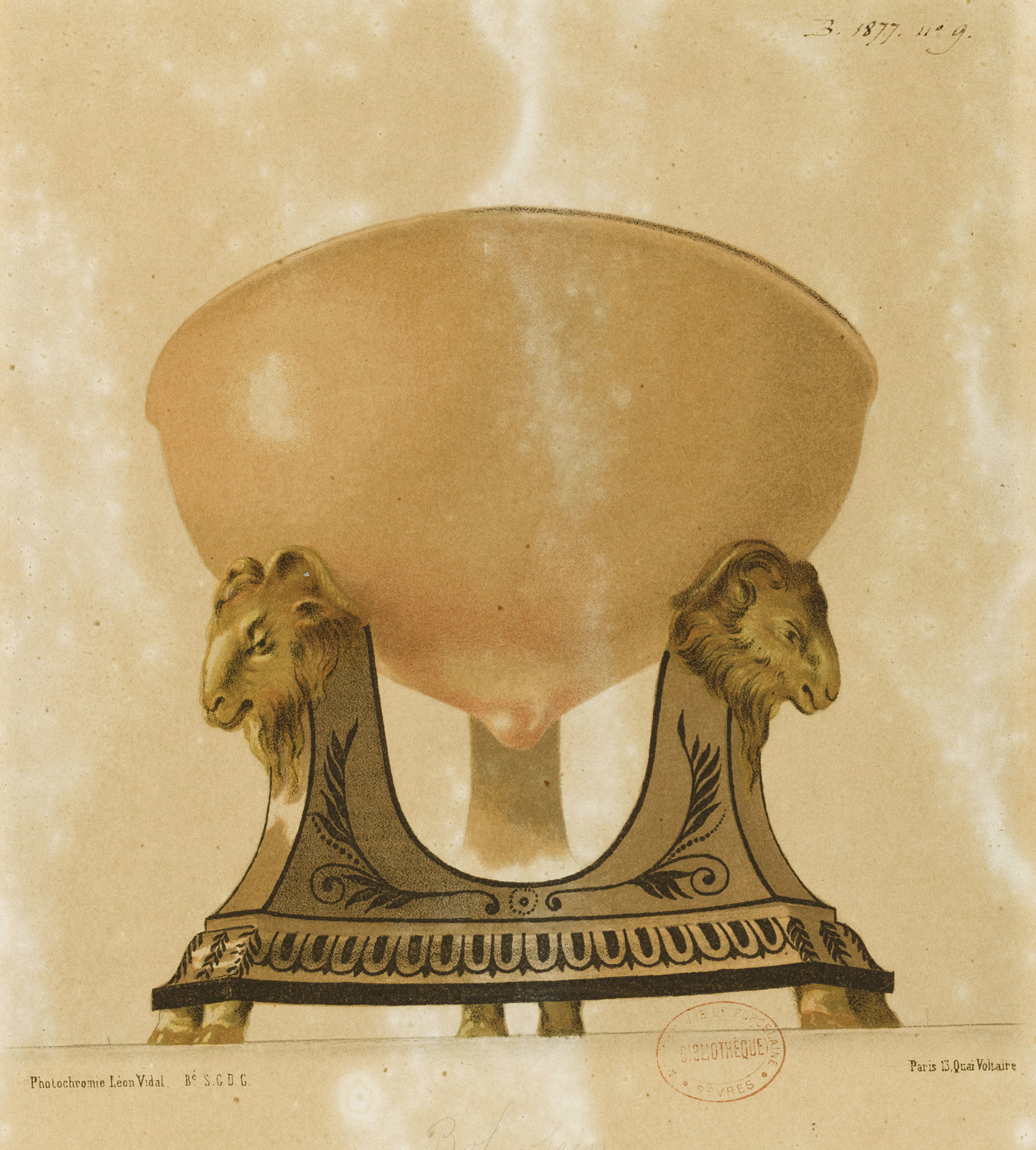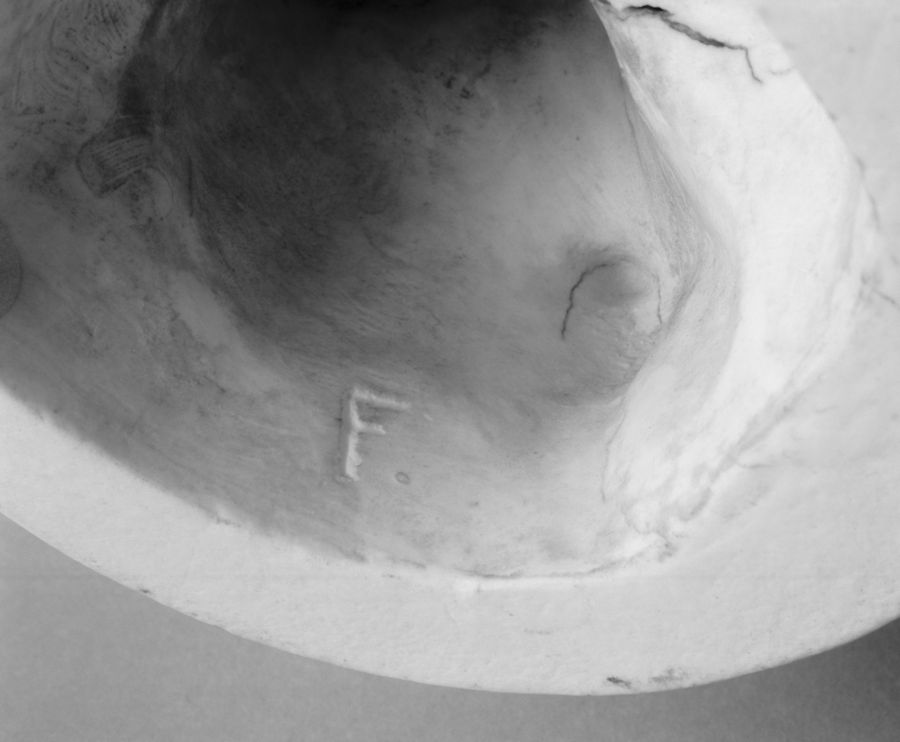Work
at
Sèvres
From its earliest years, the manufactory has been organized into distinct workshops, each specializing in one particular task: for example, preparing the paste, creating the molds, shaping the pieces, applying the background colors, and decorating the objects with colors and gold. Sèvres artisans were never part of the French guild system but were nevertheless subject to some constraints: until the French Revolution, they were forbidden to leave the premises and could not be hired by other porcelain manufactories, although the latter provision was not enforced. Employment at Sèvres conferred many advantages: workers enjoyed free medical care, pensions for their widows, exemptions from local taxes, and, later, were granted access to a retirement fund. Artisans were also permitted to train their children and nieces or nephews. Young artisans who were hired through this route were paid only from the time they were sixteen but could assist before that age.
To maintain its reputation as the premier French porcelain manufactory, Sèvres tried to hire the best workers available, and salaries were comparable to those offered at similar manufactories. When a new piece entered production, the price paid to workers was decided between the director of the manufactory, the head of the workshop, and the worker in charge of the first production; surviving ledgers show that workers could even negotiate the prices paid for some pieces. The workers were paid a notional monthly salary, but were required to meet yearly production quotas. The manufactory also employed freelance artists who were not part of the official staff.
Work at Sèvres
From its earliest years, the manufactory has been organized into distinct workshops, each specializing in one particular task: for example, preparing the paste, creating the molds, shaping the pieces, applying the background colors, and decorating the objects with colors and gold. Sèvres artisans were never part of the French guild system but were nevertheless subject to some constraints: until the French Revolution, they were forbidden to leave the premises and could not be hired by other porcelain manufactories, although the latter provision was not enforced. Employment at Sèvres conferred many advantages: workers enjoyed free medical care, pensions for their widows, exemptions from local taxes, and, later, were granted access to a retirement fund. Artisans were also permitted to train their children and nieces or nephews. Young artisans who were hired through this route were paid only from the time they were sixteen but could assist before that age.
To maintain its reputation as the premier French porcelain manufactory, Sèvres tried to hire the best workers available, and salaries were comparable to those offered at similar manufactories. When a new piece entered production, the price paid to workers was decided between the director of the manufactory, the head of the workshop, and the worker in charge of the first production; surviving ledgers show that workers could even negotiate the prices paid for some pieces. The workers were paid a notional monthly salary, but were required to meet yearly production quotas. The manufactory also employed freelance artists who were not part of the official staff.
From its earliest years, the manufactory has been organized into distinct workshops, each specializing in one particular task: for example, preparing the paste, creating the molds, shaping the pieces, applying the background colors, and decorating the objects with colors and gold. Sèvres artisans were never part of the French guild system but were nevertheless subject to some constraints: until the French Revolution, they were forbidden to leave the premises and could not be hired by other porcelain manufactories, although the latter provision was not enforced. Employment at Sèvres conferred many advantages: workers enjoyed free medical care, pensions for their widows, exemptions from local taxes, and, later, were granted access to a retirement fund. Artisans were also permitted to train their children and nieces or nephews. Young artisans who were hired through this route were paid only from the time they were sixteen but could assist before that age.
To maintain its reputation as the premier French porcelain manufactory, Sèvres tried to hire the best workers available, and salaries were comparable to those offered at similar manufactories. When a new piece entered production, the price paid to workers was decided between the director of the manufactory, the head of the workshop, and the worker in charge of the first production; surviving ledgers show that workers could even negotiate the prices paid for some pieces. The workers were paid a notional monthly salary, but were required to meet yearly production quotas. The manufactory also employed freelance artists who were not part of the official staff.

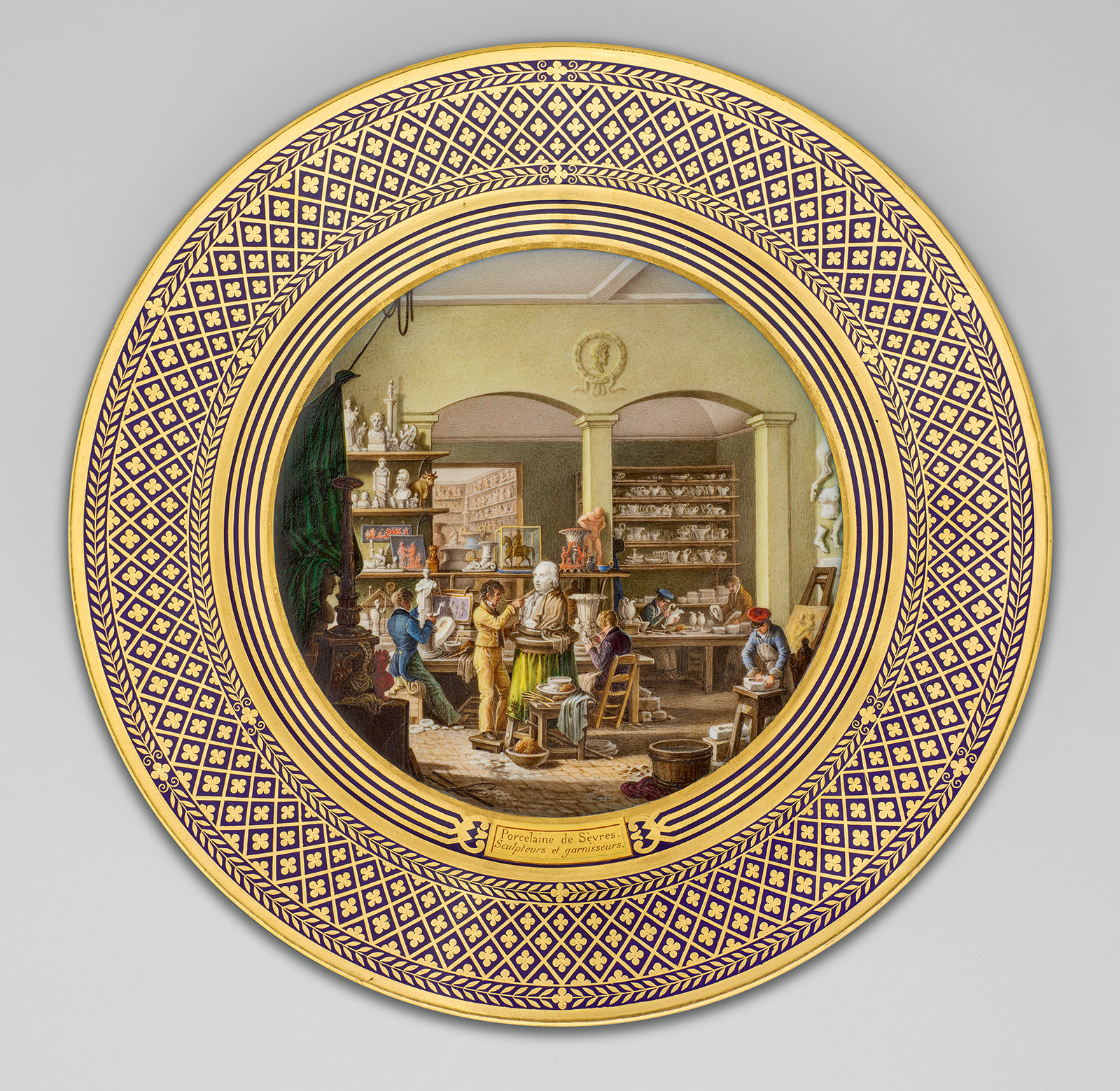
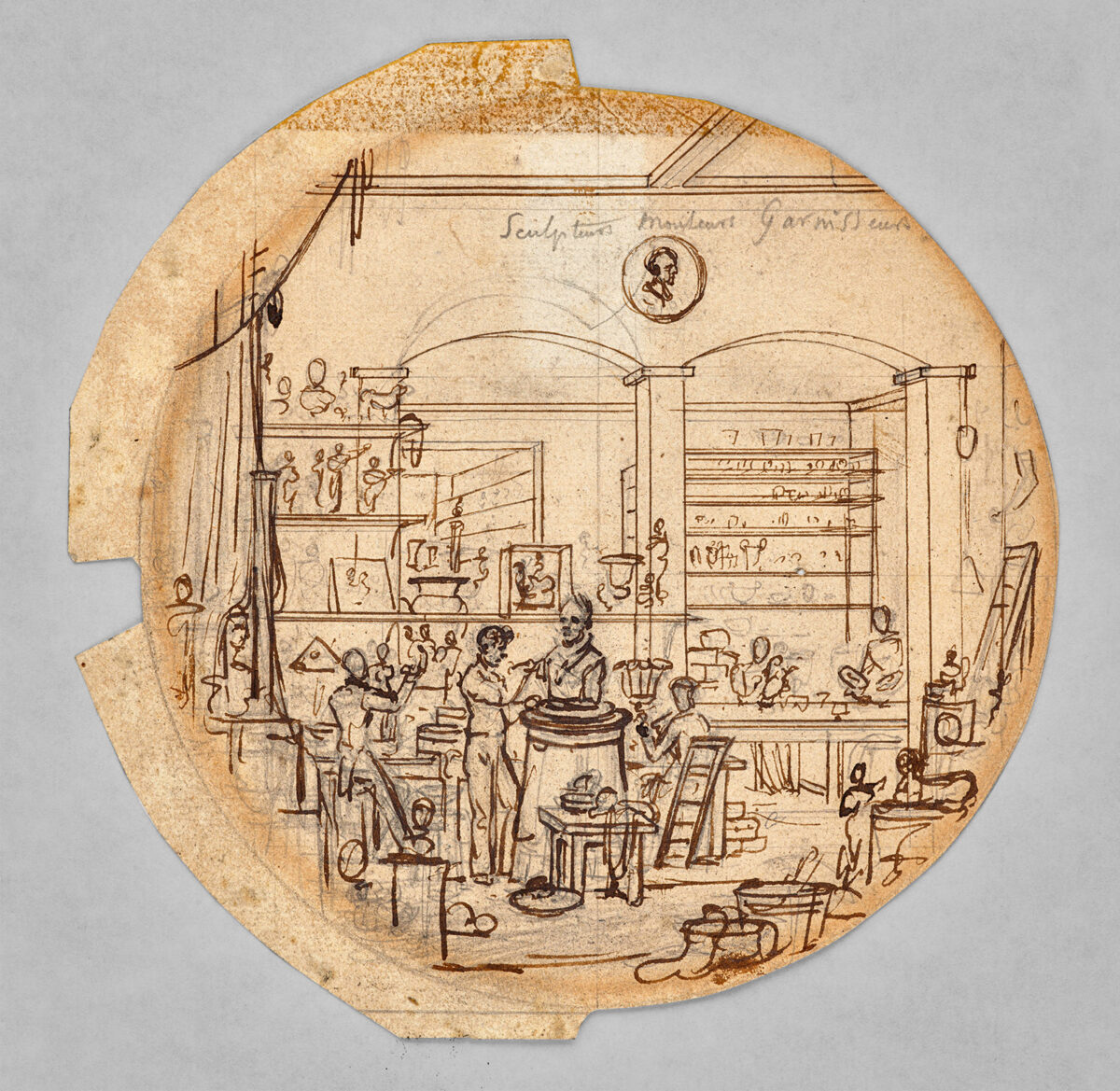
Photo © RMN-Grand Palais (Sèvres - Manufacture et musée nationaux)
Click plate center to view design for the decoration.
Workshops at Sèvres Today
Click and drag 360 images to explore the spaces.
360 photography by Jesse Merandy, 2024.
Click and drag 360 images to explore the spaces.
360 photography by Jesse Merandy, 2024.
Molding-Sculpting Workshop
Large Workshop
Plaster Mold Gallery
Upper Gallery of the Kilns









